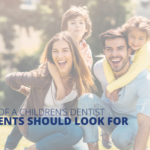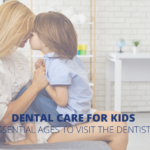
Laughing Gas for Kids: A Safe and Effective Sedation Option
It’s natural for parents to be concerned about their child’s comfort and well-being during dental procedures, especially when sedation is involved. However, among the various sedation options available, laughing gas (nitrous oxide) stands out as one of the safest and most effective for children. This article will discuss what laughing gas is, how it works, and why it is a safe and effective sedation option for kids.
What is a Laughing Gas
Laughing gas, or nitrous oxide, is a colorless and odorless gas that has been used in dentistry for over a century. It is a mild sedative, analgesic (pain reliever), and anxiolytic (anxiety reducer) that helps patients feel relaxed and comfortable during dental procedures. Due to its gentle nature and rapid onset, laughing gas is an excellent option for children who may be anxious or uncooperative during dental treatment.
How Is Laughing Gas Administered to Children During a Dental Procedure
- Pre-Procedure Consultation: Before administering laughing gas, the dentist will assess the child’s medical history, dental needs, and any potential contraindications (anything including a symptom or medical condition that is a reason for a person to not receive a particular treatment or procedure because it may be harmful. This ensures that laughing gas is an appropriate and safe option for the child.
- Preparing the Child: The dentist will explain the procedure to the child with the parent present in a calm and reassuring manner, addressing any concerns or fears they may have. This helps create a positive and relaxed environment for the child.
- Administering the Gas: The child will be given a small mask to place over their nose, through which the laughing gas will be administered. The dentist will carefully control the flow of gas to achieve the desired level of sedation. The child may experience a feeling of warmth, tingling, or light-headedness as the gas takes effect.
- Performing the Dental Procedure: Once the child is relaxed and comfortable, the dentist will proceed with the necessary dental treatment. Throughout the procedure, the dentist will monitor the child’s comfort and adjust the flow of laughing gas as needed.
- Post-Procedure Recovery: After the procedure is completed, the child will be given 100% oxygen to help reverse the effects of the laughing gas. Within minutes, the child should feel back to their normal state, allowing them to resume their regular activities.
Why is Laughing Gas a Safe Sedation Option for Kids
- Minimal Sedation: Unlike other sedation options, laughing gas provides a minimal level of sedation, meaning that the child remains conscious and can communicate with the dental team throughout the procedure. This reduces the risks associated with deeper levels of sedation, such as respiratory depression or loss of protective reflexes.
- Rapid Onset and Quick Recovery: The effects of laughing gas are almost immediate and can be easily adjusted to the child’s needs. Once the gas is turned off, the child will return to their normal state within minutes, with no residual drowsiness or disorientation. This allows for a quicker return to daily activities, making it a convenient and efficient option for busy families.
- Few Side Effects: Laughing gas is considered one of the safest sedation options available, with very few side effects. Some children may experience mild nausea or dizziness, but these symptoms are generally short-lived and can be minimized by adjusting the concentration of the gas or providing supplemental oxygen.
- Non-Invasive Administration: Unlike other sedation methods, which may require an injection or the insertion of an intravenous (IV) line, laughing gas is administered through a small, comfortable mask placed over the child’s nose. This non-invasive method is particularly beneficial for children who may be fearful of needles or uncomfortable with the idea of an IV.
- Effective Pain and Anxiety Relief: Laughing gas has been proven to effectively reduce pain and anxiety during dental procedures, helping to create a more comfortable and positive experience for both the child and the dental team. By reducing the child’s fear and discomfort, the dental team can work more efficiently, resulting in shorter appointment times and better overall outcomes.
When is Laughing Gas Not Recommended
While laughing gas is generally considered safe for most children, there are certain situations where it may not be the best option. These may include children with:
- Severe respiratory issues, such as asthma or bronchitis
- Nasal congestion, which could interfere with the proper inhalation of the gas
- Certain medical conditions or medications that may interact with laughing gas
- A history of substance abuse or addiction
In these cases, your dentist or pediatric dentist will discuss alternative sedation options that may be more appropriate for your child’s specific needs.
Laughing Gas as a Whole
If you’re a parent concerned about your child’s comfort during dental procedures, laughing gas may be a safe and effective sedation option. Its gentle nature, non-invasive administration, and minimal side effects make it an excellent choice for children who may be anxious or uncooperative during treatment. By discussing the benefits of laughing gas with your dental team and assessing your child’s specific needs, you can help ensure that their dental experience is positive, comfortable, and stress-free.
Are you looking for a trustworthy pediatric dentist in Bend, Oregon (east location I west location) or Redmond, Oregon? Then look no further than Deschutes Pediatric Dentistry! We understand that dental visits can be intimidating for children, which is why we strive to create a welcoming and comfortable environment for our young patients. Our experienced team of dental professionals is dedicated to providing the highest quality care for your child, including safe and effective sedation options like laughing gas. Let us help your child achieve a happy dental experience! Schedule an appointment with us today!


